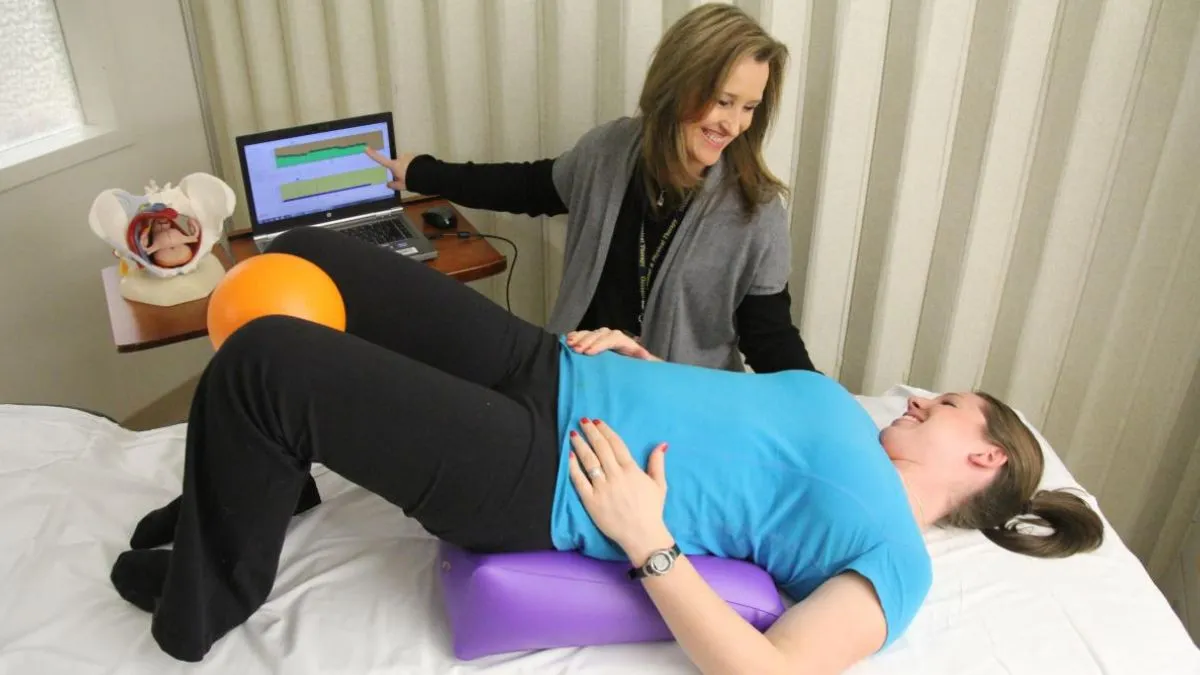
Most women aren't thinking about their pelvic floor until something goes wrong. The complications arise in either a form of slight urine leakage while laughing, sneezing, or running, or feeling heavy in the lower pelvis that wasn't there before. While these symptoms are common than one may think, they are also not something one have to silently accept or be OK with.
Table of Content:-
The pelvic floor consists of a group of muscles, ligaments, and tissues that support some of the most vital organs in your body, including the bladder, uterus, and rectum. These muscles help control the bladder and bowels, contribute to sexual function, and also keep the core stable. Over time, factors like childbirth, menopause, chronic constipation, heavy lifting, and even poor posture can take their toll or strain on these muscles. Many women assume such changes are natural or age-related, but pelvic discomfort is not an inevitable part of life. And, this is where pelvic floor therapy come in.
Why Pelvic Floor Therapy Matters
Pelvic floor therapy is not just about doing Kegels, but about helping the pelvic muscles do their job in a strong, coordinated, and supportive way. According to Dr Sindura Ganga R, Consultant - Obstetrics, Gynaecology and Laparoscopic Surgeon, Centre for Women and Child Health, Arete Hospitals, many women come in after childbirth with leakage, pelvic pressure, or bowel issues. Menopausal women might struggle with urgency, vaginal laxity, or pain. “Yes, these symptoms are incredibly common, but they are absolutely treatable,” she shared. Strengthening the pelvic floor can:
- Improve bladder and bowel control
- Reduce heavy or dragging feeling in the pelvis
- Ease lower back or hip pain
- Improve posture
- More comfortable movement, exercise, and even intimacy
Also Read: Can Codependency Affect Your Romantic Relationship?

Beyond physical changes, therapy helps many women feel more confident and in control of their bodies again.
What Pelvic Floor Therapy Includes
A pelvic floor therapist is trained to evaluate the strength or tightness of the pelvic muscles and how well they coordinate. They will develop a plan based on your symptoms. Therapy may include:
- Strengthening or relaxation exercises: Not all pelvic floors are weak, some are too tight. Therapy targets exactly what your muscles need.
- Biofeedback: Sensors help you understand when you're using your muscles correctly.
- Hands-on therapy: Gentle internal or external techniques release tension and improve mobility.
- Breathing and posture training: These small adjustments reduce the pressure on the pelvic organs.
- Lifestyle modifications: From how you lift things to the way you sit at your desk, small habits can support long-term pelvic health.
Dr Ganga highlighted that the goal isn't just the resolution of symptoms, but it's teaching you how to maintain a strong, healthy pelvic floor yourself.
When Should One Consider Pelvic Floor Therapy?
“You don't need to have severe symptoms to seek help. It is worth addressing even mild changes early. Reach out to a professional if you experience the following:” shared Dr Ganga:
- Leakage with coughing, sneezing, laughing, or exercising
- A feeling of heaviness or pressure in the pelvis
- Pain during sex
- Difficulty urinating or passing stool
- Recurring urinary infections
- Unexplained pelvic or lower back pain
Also Read: Cancer Isn’t Just a Smoker’s Disease Anymore, Expert Shares the Hidden Risks You Should Know

Is Pelvic Floor Therapy Shameful?
Many women are embarrassed to discuss pelvic floor problems. These are medical problems, like headaches, back pain, or stiffness of the joints. Gynaecologists and pelvic floor therapists deal with these problems every day. Being open is often the first step to getting relief without medication or surgery.
How To Build Pelvic Health into Daily Life?
“Pelvic floor therapy doesn't stop at the clinic. Some very simple daily habits, such as good posture, proper breathing, avoiding heavy straining, and doing one's exercises, make a world of difference. Over time, many women notice fewer leaks, more comfort during intimacy, better bowel habits, and more confidence in movement,” she added.
Bottomline
According to experts, pelvic floor therapy is a simple, and effective way to improve bladder control, reduce pelvic discomfort, and support long-term health, no matter your age.
FAQ
1. Is pelvic floor therapy only for women after childbirth?
No, it serves all categories of women, even the teenager to the menopausal woman and anyone with pelvic symptoms.2. How long does it take to see results of pelvic floor therapy?
Most people find an improvement within four to six weeks with regular therapy and exercises at home.3. How does pelvic floor therapy work to alleviate pain during sex?
Yes, if pain is stemming from tight or weak pelvic muscles, therapy to those areas can reduce one's discomfort significantly.
How we keep this article up to date:
We work with experts and keep a close eye on the latest in health and wellness. Whenever there is a new research or helpful information, we update our articles with accurate and useful advice.
Current Version
Nov 25, 2025 16:04 IST
Modified By : Tanya SrivastavaNov 25, 2025 16:04 IST
Published By : Tanya Srivastava